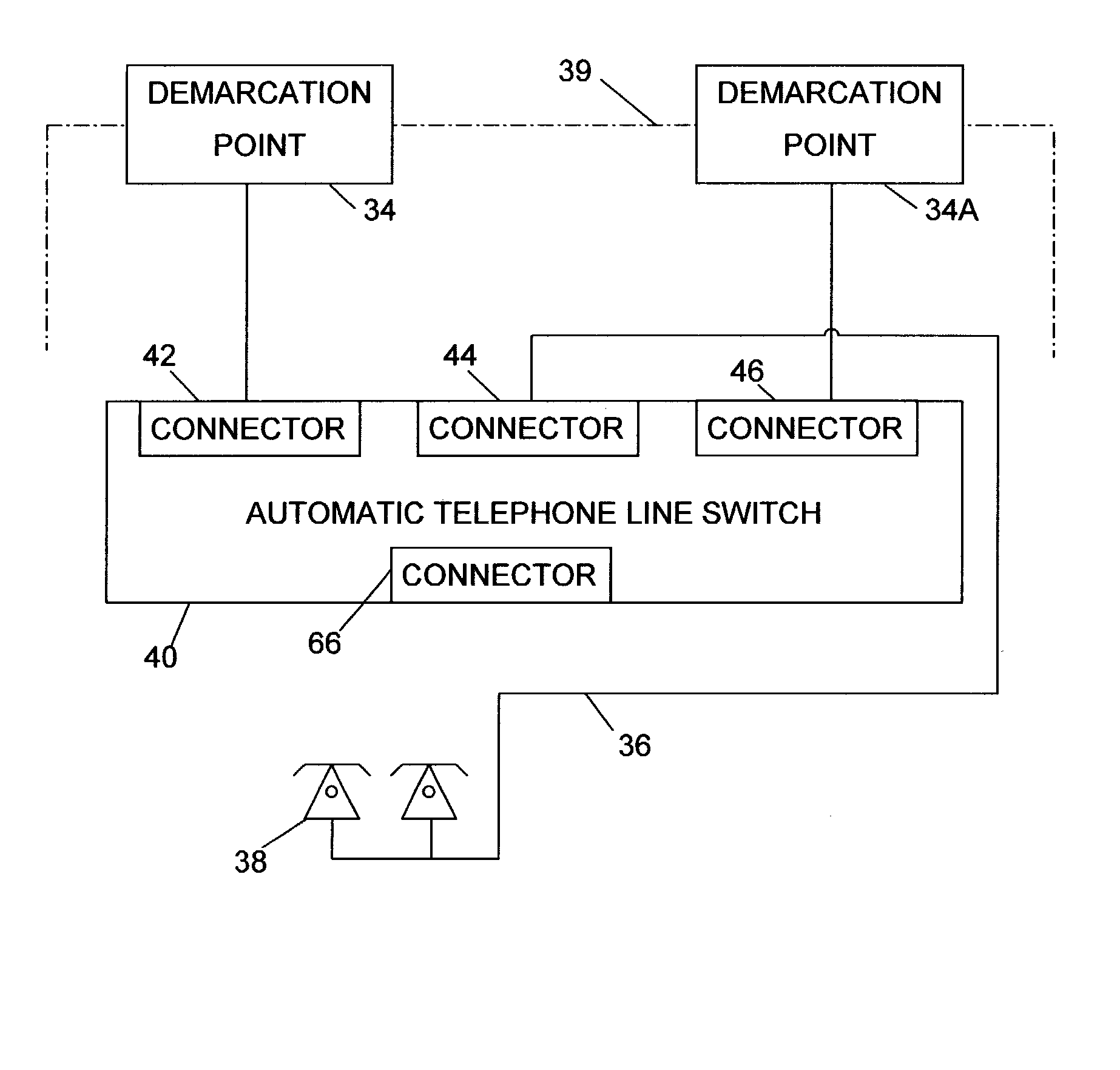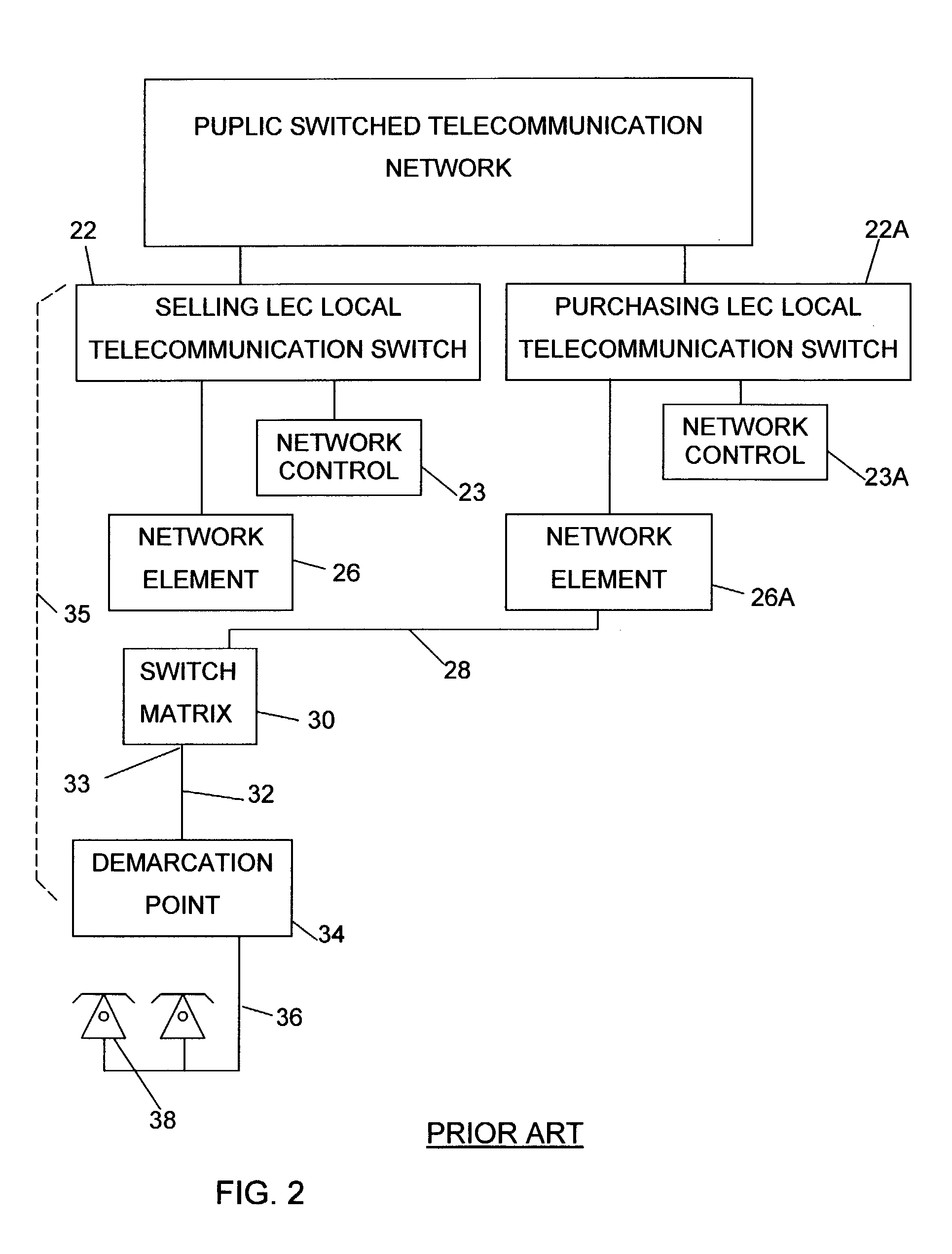Automatic telephone line switch
a telephone line switch and automatic technology, applied in the field of telecommunication switch, can solve the problems of telecommunication switch, voiding any benefits for consumers, and leaving the lec with an unused facility that still needs maintenance,
- Summary
- Abstract
- Description
- Claims
- Application Information
AI Technical Summary
Problems solved by technology
Method used
Image
Examples
Embodiment Construction
ATLS Network Connection
[0025] The connections between the ATLS 40, the local networks and the customer-premises telephone line are shows in FIG. 4. The customer-premises telephone line is connected to connector 44 while the LEC network is connected to 42 and the CAP network is connected to 46. Connector 66 is used to program the central processor 162.
Detailed Block Diagram
[0026] A more detailed block diagram of one embodiment of the ATLS is shown in FIG. 5. The latching relay 58 has two coils 48 and 48A. The side B line interface 62 activated coil 48 to force relay 58 to toggle and establish a connection between connector 42 and 44. Conversely the Side A line interface 62A activated coil 48A to force relay 58 to toggle and establish the connection between connector 44 and 46. Protection 50 is a combination of an over-voltage and current limiting circuit to protect relay 58 from transient that may be present on the telephone line at 42. This protection is designed to pass, without...
PUM
 Login to View More
Login to View More Abstract
Description
Claims
Application Information
 Login to View More
Login to View More - R&D
- Intellectual Property
- Life Sciences
- Materials
- Tech Scout
- Unparalleled Data Quality
- Higher Quality Content
- 60% Fewer Hallucinations
Browse by: Latest US Patents, China's latest patents, Technical Efficacy Thesaurus, Application Domain, Technology Topic, Popular Technical Reports.
© 2025 PatSnap. All rights reserved.Legal|Privacy policy|Modern Slavery Act Transparency Statement|Sitemap|About US| Contact US: help@patsnap.com



